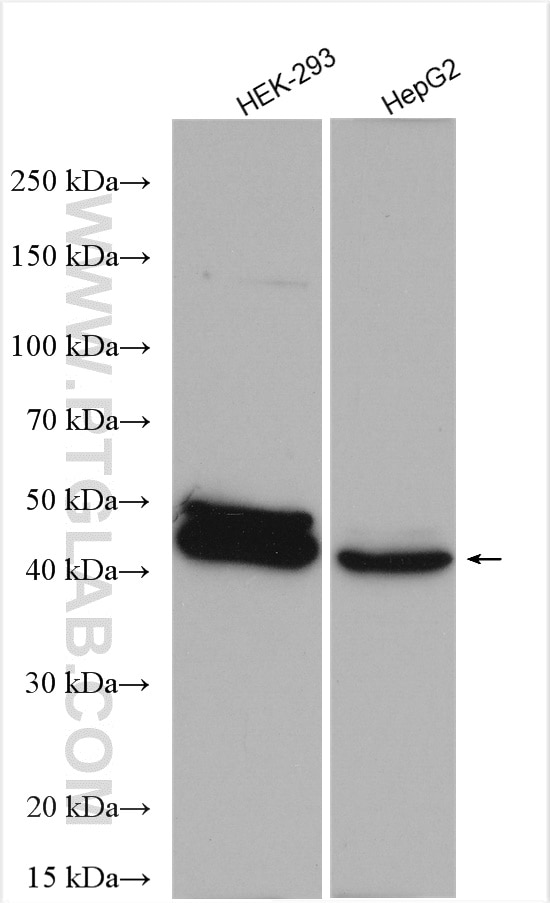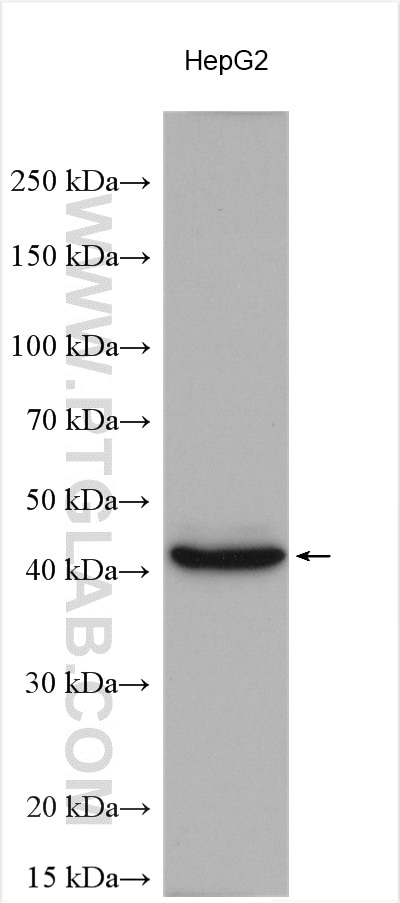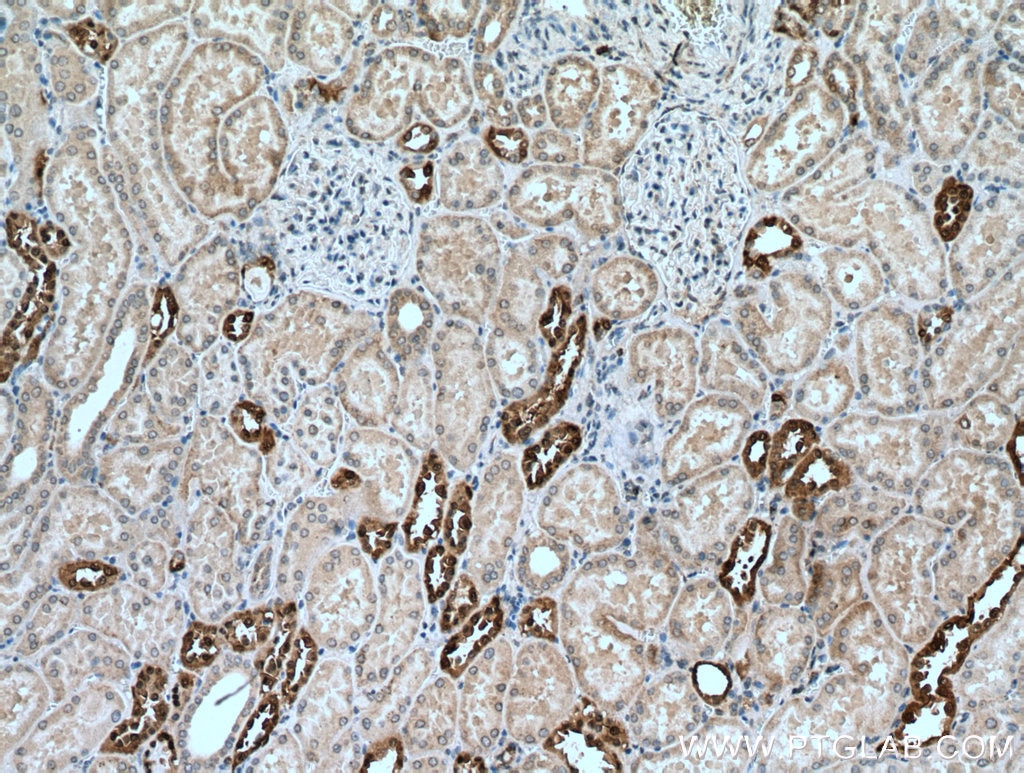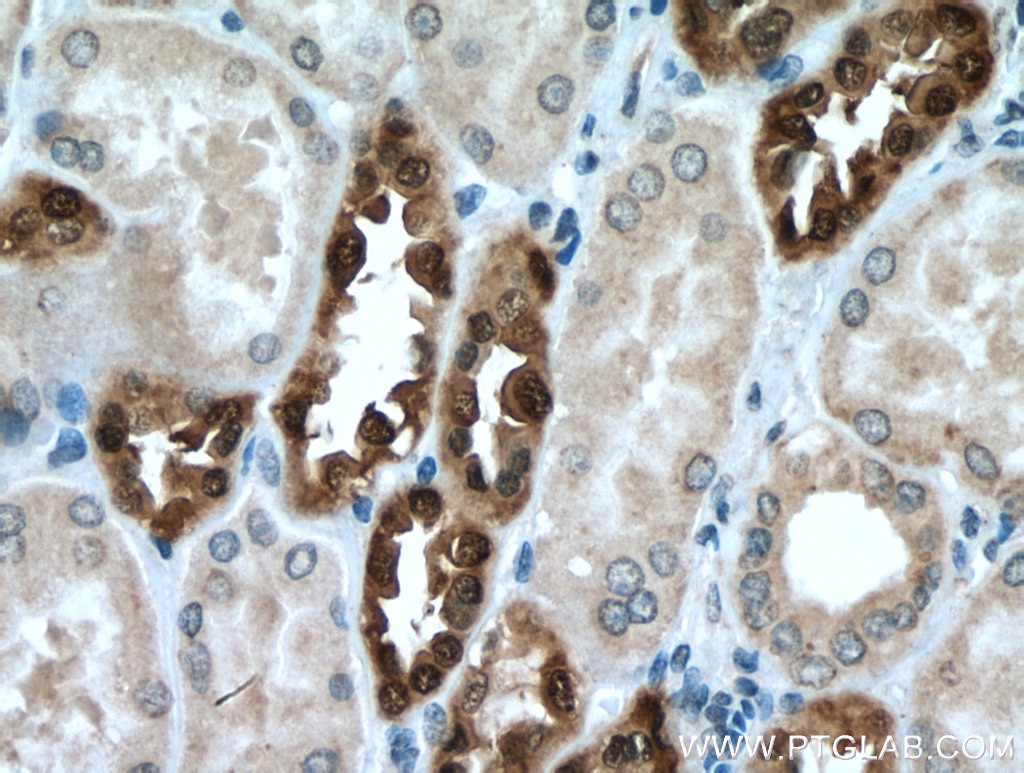DUSP9 Polyklonaler Antikörper
DUSP9 Polyklonal Antikörper für WB, IHC, ELISA
Wirt / Isotyp
Kaninchen / IgG
Getestete Reaktivität
human
Anwendung
WB, IHC, ELISA
Konjugation
Unkonjugiert
Kat-Nr. : 26718-1-PBS
Synonyme
Geprüfte Anwendungen
Produktinformation
26718-1-PBS bindet in WB, IHC, ELISA DUSP9 und zeigt Reaktivität mit human
| Getestete Reaktivität | human |
| Wirt / Isotyp | Kaninchen / IgG |
| Klonalität | Polyklonal |
| Typ | Antikörper |
| Immunogen | DUSP9 fusion protein Ag25167 |
| Vollständiger Name | dual specificity phosphatase 9 |
| Berechnetes Molekulargewicht | 42 kDa |
| Beobachtetes Molekulargewicht | 42 kDa |
| GenBank-Zugangsnummer | BC060837 |
| Gene symbol | DUSP9 |
| Gene ID (NCBI) | 1852 |
| Konjugation | Unkonjugiert |
| Form | Liquid |
| Reinigungsmethode | Antigen-Affinitätsreinigung |
| Lagerungspuffer | PBS only |
| Lagerungsbedingungen | Store at -80°C. 20ul Größen enthalten 0,1% BSA. |
Hintergrundinformationen
Dual specificity protein phosphatase 9 (DUSP9) is also named itogen-activated protein kinase phosphatase 4 (MAP kinase phosphatase 4; MKP-4). DUSP9 is a typical DUSP characterized by the presence of an MKB/KIM motif and a phosphatase domain, which shares structural homology with other DUSPs (PMID: 25519881). DUSP9 is an important downstream regulator of BMP/Smad signaling and a key factor in maintaining the stemness of mESCs (PMID: 34768967). DUSP9 is one of the key genes involved in gonadotrophin-mediated ovarian follicle development (PMID: 33676987). DUSP9 expression increases during insulin-induced adipogenesis and culminates in mature adipocytes. DUSP9 as a key regulator of insulin signaling and highlighted its potential role in insulin resistance and metabolic diseases by dephosphorylating kinases involved in metabolic processes, glucose uptake and storage. DUSP9 can also impair the action of extracellular mediators and stress inducers (i.e., proinflammatory cytokines), which can induce insulin resistance by abnormally activating MAPK or SAP pathways (PMID: 30063256, PMID: 18296638). In normal mature tissues, DUSP9 is mainly expressed in kidney, adipose tissue and placenta, while it is only minimally present in brain, ovary, testis and urinary bladder (PMID: 34768967).









